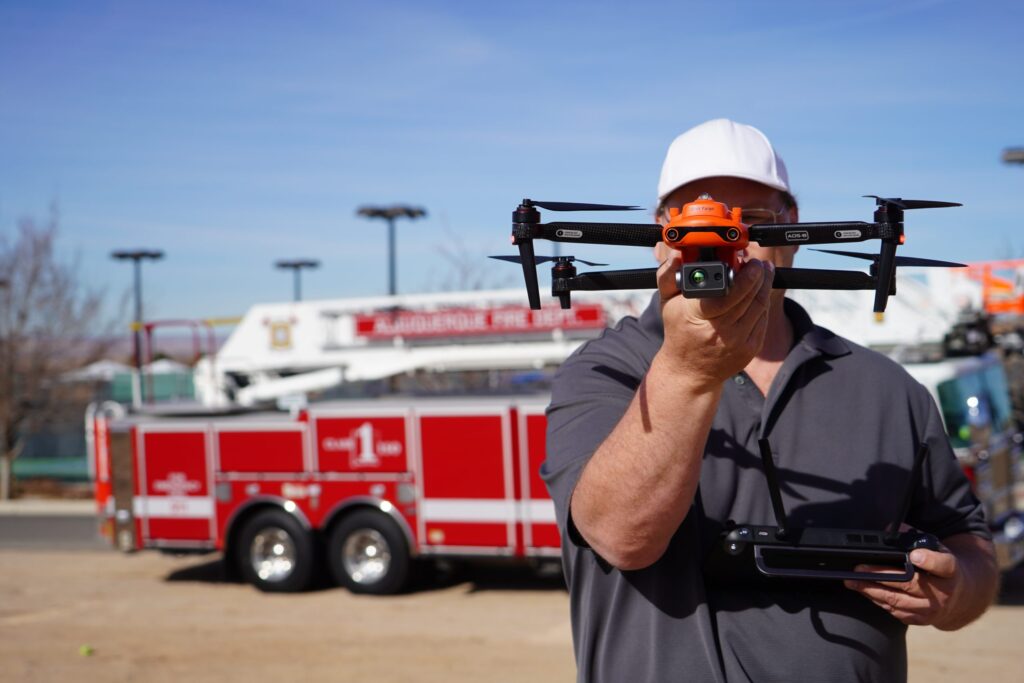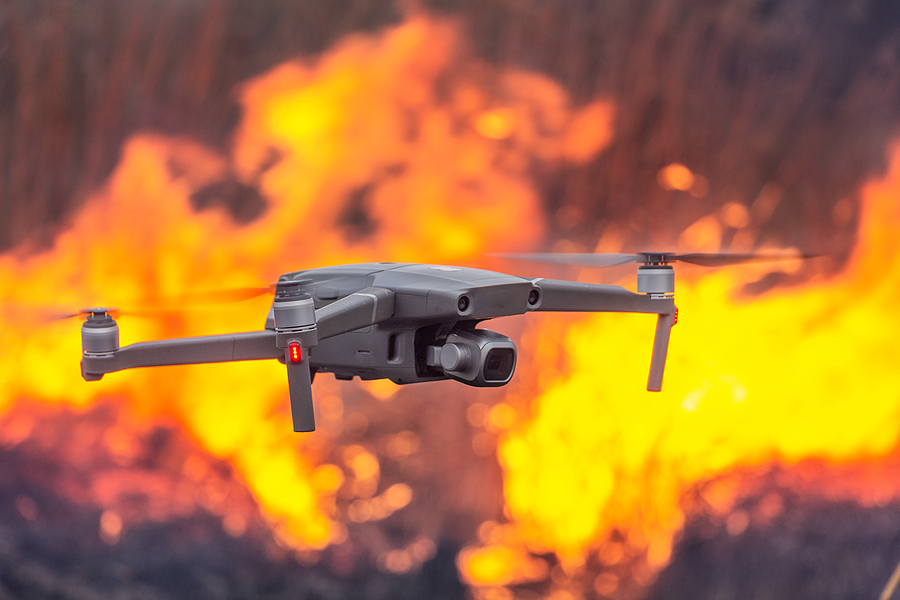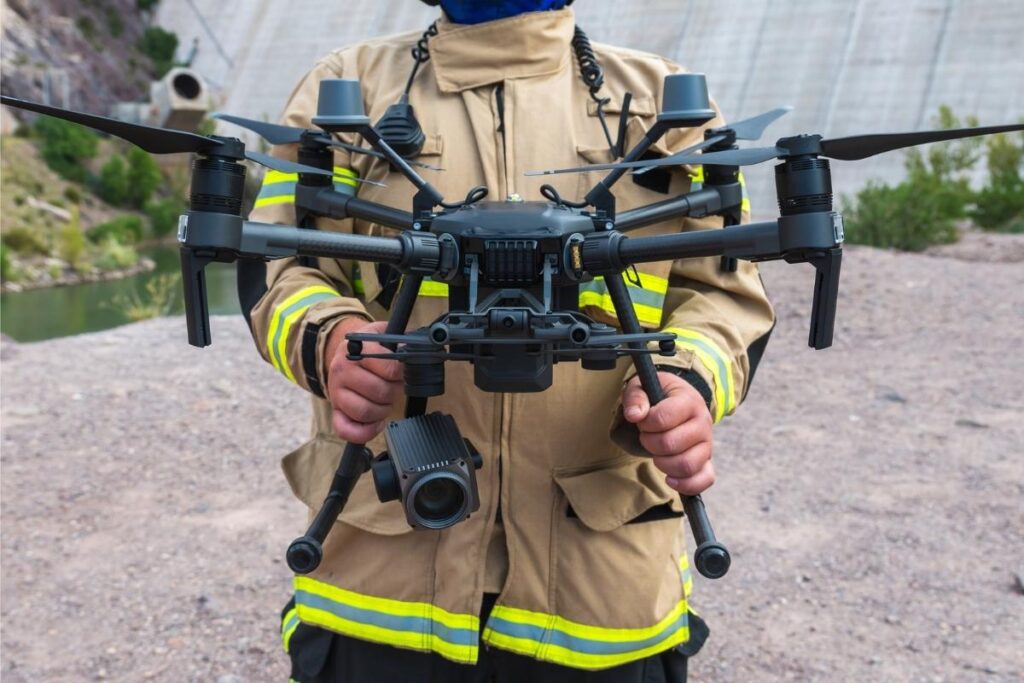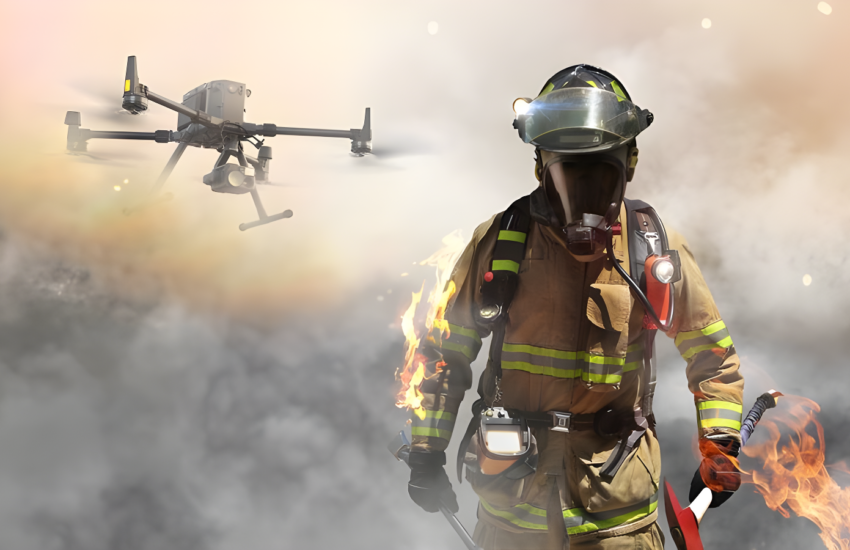Flying Into the Future: Why Drones Matter
Fire scenes can shift in seconds. Heat builds, structures fail, visibility drops—and every decision made on the ground carries life-or-death consequences. For years, firefighters have relied on radios, on-the-ground observations, and limited aerial support. But now, drones—those compact, high-tech tools we once thought belonged only to hobbyists or the military—are giving fire crews the kind of real-time intelligence they’ve never had before.
Drone-assisted fire assessments are more than just a cool gadget story. They’re about saving lives—both civilian and firefighter. They help us see what we otherwise couldn’t: a weakening rooftop, a trapped heat pocket, or a civilian waving from a top window obscured by smoke. In Arlington and departments across the country, drones are quickly becoming essential equipment. Not a bonus—an expectation.
Drones aren’t replacing firefighters. They’re extending our reach—literally and strategically.
What Exactly Is a Drone-Assisted Fire Assessment?
When we talk about drone-assisted fire assessments, we’re talking about using unmanned aerial vehicles (UAVs) to gather high-definition visual and thermal data from fire scenes—both live and after the flames are out. These drones are typically operated by trained firefighters or drone specialists within the department. Many carry infrared cameras that can detect heat signatures through smoke or inside buildings. Some include zoom lenses, environmental sensors, and software that helps interpret the data in real time.

The goal? Better visibility and smarter decision-making. At the height of a structure fire, a drone can scan a rooftop in seconds, monitor the fire’s path through an attic, or identify collapsing walls before they fall. Afterward, they help assess damage and pinpoint the fire’s origin. And in wildland fires, drones have proven especially vital, tracking flame spread over miles of rugged terrain no human could reach quickly—or safely.
Before drones, our bird’s-eye view came with a price—usually a helicopter, time delay, and limited detail. Now? We launch, scan, and react within minutes.
Where Drones Make the Biggest Difference
There’s no single use case for drones—they’re helpful across the board. But here’s where they’ve made some of the biggest operational impacts:
1. Incident Command and Strategic Planning
During large-scale incidents, drone feeds give the command center live updates on fire behavior, structural changes, and firefighter positioning. That means decisions—like when to pull a crew, where to ventilate, or how to allocate water resources—are based on current facts, not best guesses.
2. Search and Rescue in Dangerous Conditions
When seconds matter and visibility is low, drones equipped with thermal imaging can scan buildings or wooded areas for signs of life. In Arlington, we’ve had incidents where drones spotted a downed person in a backyard completely hidden by smoke. Without that tech, we might have walked past them.
3. Post-Fire Analysis and Safety Audits
Once the scene is stable, drones offer a safe way to inspect damage from above. Roofs too weak to walk on? Walls leaning? Instead of risking a firefighter’s life, we send the drone. The data is also useful for insurance, rebuilding, and investigations into fire cause and origin.
4. Wildfire Tracking and Containment Support
Wildland firefighting often means working miles from roads, with fires that stretch for acres or even hundreds of miles. Drones can fly grid patterns, map hot zones, and locate potential escape routes for crews. They also help detect flare-ups in areas we’ve already cleared.

What We’ve Learned Using Drones in Arlington
We didn’t become experts overnight. Like any tool, drones come with a learning curve. Pilots need certification. Battery life has to be managed. Weather conditions—like wind or heavy rain—can ground even the most advanced UAV. But we’ve adapted quickly because the benefits are too valuable to ignore.
One of the key lessons? Communication. The drone operator must stay connected to command, and the data needs to flow smoothly into the decision-making process. We also realized early on that drone data should never replace experience—it should support it. When you combine eyes in the sky with boots on the ground, you get a safer, smarter fireground.
Firefighting isn’t just muscle and instinct anymore. It’s data, too—and drones are helping deliver it faster than ever.
The Human Side: Reducing Risk to Our People
Every firefighter knows the feeling—entering a burning structure not knowing what’s ahead. Will the floor hold? Is someone still inside? Is this worth the risk? Drones are helping us remove some of that uncertainty. When a UAV tells us a roof is about to collapse, we don’t send someone in blind. When thermal imaging shows no life signs inside a fully engulfed building, we know where to focus our efforts instead.

This isn’t just about tech—it’s about protecting our crew. Every time a drone takes a risk so a human doesn’t have to, that’s a win. It helps us fulfill our mission: save lives and bring everyone home safely.
Challenges and What Still Needs Work
We’re not naïve. Drones aren’t a silver bullet. There are real challenges—especially around regulations. The Federal Aviation Administration (FAA) governs airspace, which means not all areas or altitudes are fair game. Operators must be trained, certified, and aware of no-fly zones. Data security is another concern, especially as departments upload drone footage to cloud platforms for analysis or recordkeeping.
We’ve also faced technical hiccups. Batteries can drain fast in the cold. High winds can push drones off course. Signal loss near large steel structures is a problem. And then there’s the budget—buying quality drones and training pilots takes money that not all departments have. Still, the cost of not adapting is far greater. Most fire departments that invest in drone programs find creative ways to fund them—grants, donations, or shared resources with police or emergency management.
Smarter Drones, Smarter Firegrounds
The next wave of drones is already arriving. We’re talking AI-assisted flight, automatic hazard detection, and even autonomous UAVs that can fly programmed routes and make decisions without human input. Some departments are testing drones that launch from fire trucks or stations automatically when a call comes in. Others are integrating drone data directly into command dashboards, with overlays that show crew positions, hydrant locations, and fire spread predictions.
At the end of the day, we’re not chasing technology just for the sake of it. We’re doing it because fires are getting more complex. Structures burn hotter and faster. Wildfires are more frequent and unpredictable. And communities expect—and deserve—the best response we can give. Drones help us rise to that challenge.
This isn’t the future of firefighting. This is now—and we’re already seeing the difference it makes.
What We Carry Forward
Drone-assisted fire assessments are changing the game, not just in Arlington but around the country. They give us another tool in our arsenal—a fast, flexible, information-rich eye in the sky. But like any tool, their true value depends on the people using them. In the hands of trained firefighters who understand the stakes, drones don’t just make things easier—they make them safer, smarter, and more effective.
So whether it’s a structure fire on a city block or a brush fire out in the county, the lesson is clear: give firefighters better data, and they’ll do the rest. We’re proud to be a department that’s embracing that future. And we’ll keep flying forward—one safe landing at a time.
Sources:
Firehouse.com – How Firefighters Are Using Drones
NFPA Journal – Drones and Firefighting
Fire Engineering – The Drone Revolution in Firefighting


